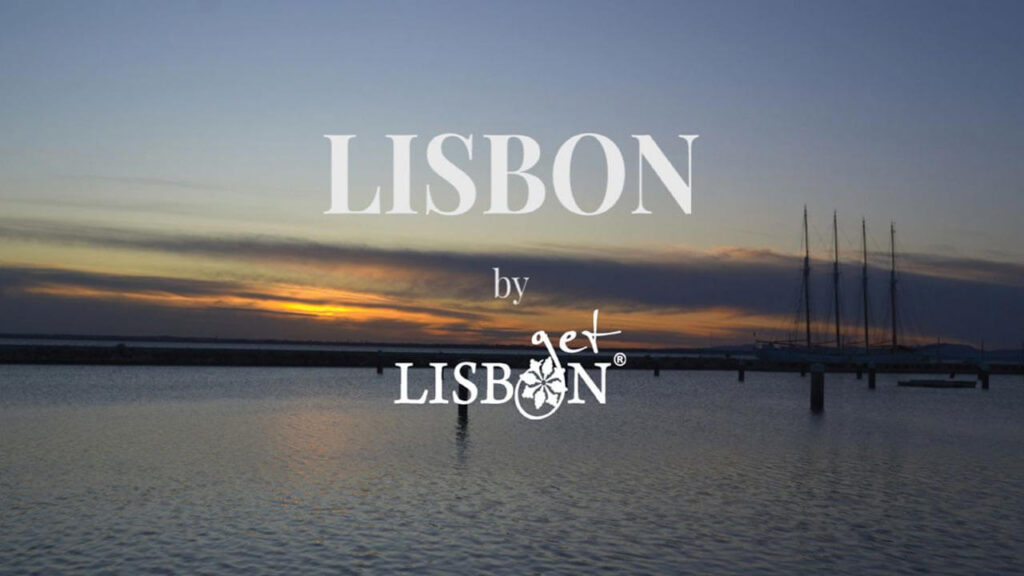The jacarandas of Lisbon are in bloom!
Every year, between May and June, the city’s streets, squares and gardens are adorned in lilac, thanks to the stunning blossoms of this species. Their beauty and exuberance never fail to captivate.
This event never goes unnoticed: the first trees to flower make the news; photos and videos multiply across social media; and visitors seek out the most scenic spots to capture these magical moments.
For all these reasons, we set out to learn more about Lisbon’s jacarandas and to explore some of the places where you can best admire their bloom.
The Exotic Jacarandas of Lisbon
Among the dozens of existing species, the one found in Lisbon is the blue jacaranda, scientifically known as Jacaranda mimosifolia, native to South America (Argentina, Bolivia and southern Brazil).
Associated with wisdom and good fortune, the flowers of this tree are not only beautiful but also possess properties used for medicinal purposes. Its timber, appreciated for its durability, is commonly used in furniture making.
The jacarandas of Lisbon were brought from Brazil in the early 19th century by Félix de Avelar Brotero (1744–1828), then director of the Botanical Garden of Ajuda. This renowned botanist was also responsible for introducing the species to the streets of Lisbon, as he offered seeds from the first specimens – acclimatised in the garden itself – to anyone interested in planting them. Today, among other more recent specimens, two original jacaranda trees still remain, continuing to beautify the garden and, interestingly, they are the last to bloom in the city.
Another interesting fact is that the Garden of Alto de Santo Amaro, which honours the name of Avelar Brotero, is home to magnificent specimens of these trees.
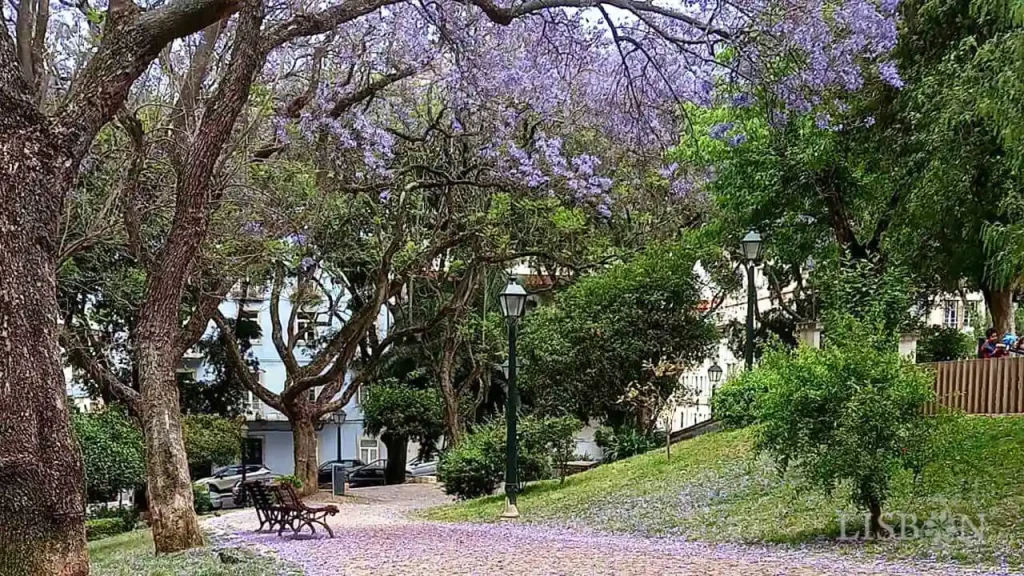
Given its origin, the species adapts particularly well to temperate and/or warm climates. In Portugal, jacarandas are most prevalent in southern regions. In Lisbon, they were planted in many public spaces, and during their blooming period they stand out as a signature tree of the city.
A slender-trunked tree with a rounded crown, the jacaranda can grow up to around 15 metres in height. Its fruit appears as globe-shaped capsules, 5 to 6 cm in diameter, green at first and later turning brown as they mature, releasing hundreds of flat seeds with membranous wings in the autumn. In winter, the tree loses its fern-like leaves.
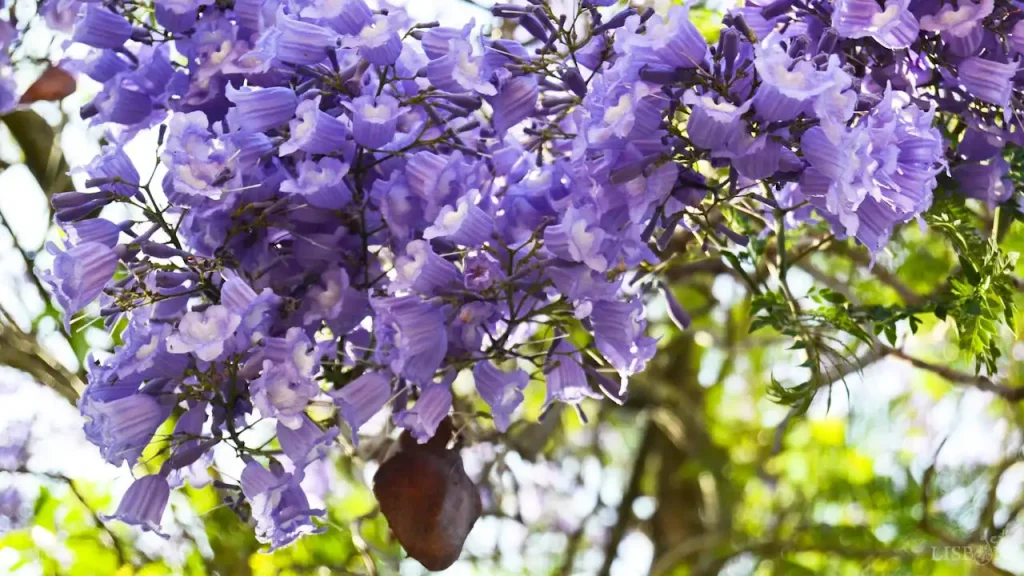
The most anticipated event occurs between May and June, when, still bare of leaves, immense bouquets of vibrant lilac trumpet-shaped flowers emerge at the tree tops, catching the eye of every passer-by. If conditions allow, a second, though far less intense, bloom may occur in autumn – the time when spring begins in the southern hemisphere, the jacaranda’s place of origin.
As days go by, the falling blossoms form dense violet carpets across pavements and roads. Their colour, reflected and dispersed through the surrounding atmosphere, makes Lisbon’s already magical light even more dazzling… and so, in a truly unique way, the arrival of summer is announced in the city.

By purchasing your tickets here you are supporting the getLISBON project.
In Search of Jacarandas in Lisbon
We can recall the beauty of the jacarandas of Lisbon in many ways and in many parts of the city. Their blossom can be admired at the start of summer and, more discreetly, again in autumn. Outside these periods, their magic is remembered through a poem or a song dedicated to them.
Rossio – Praça D. Pedro IV
This true reception hall for visitors to Lisbon boasts not only a grand Portuguese pavement with its iconic wave pattern, Mar Largo, but also two magnificent 19th-century monumental fountains rich in marine symbolism. During bloom, the jacarandas encircling the square make it all the more breathtaking.
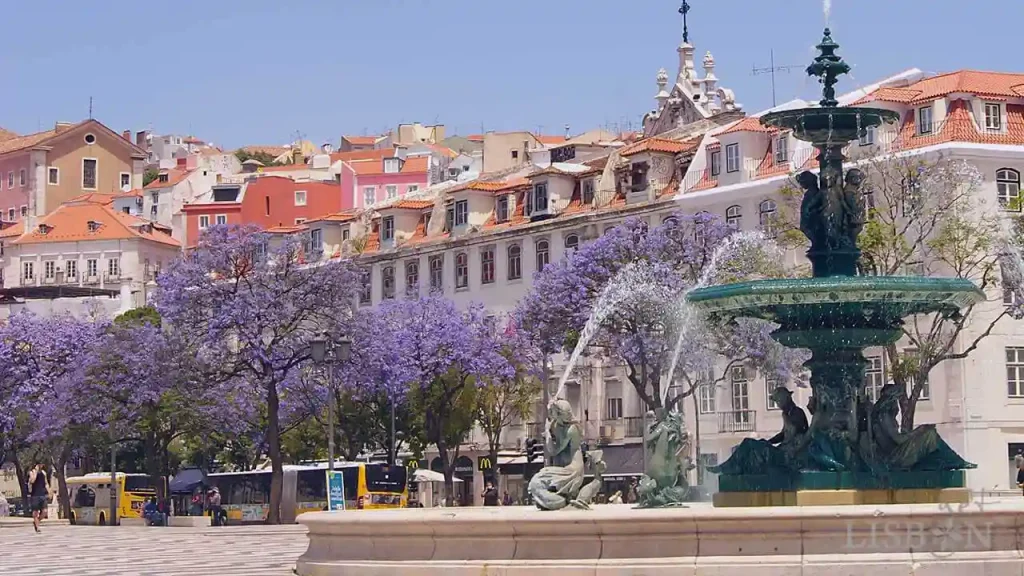
Chafariz das Moiras
Located in Correio Mor Square, this fountain bears the inscription “UTILIDADE DO PUBLICO ANNO DE 1815” and, against a pink wall, creates one of the most picturesque jacaranda settings.
Nearby, you’ll find the Church and Museum of Saint Anthony, Lisbon Cathedral, and the Aljube Museum – all must-visits.

Necessidades Square
The Tapada das Necessidades, the Palace of the same name, and the discreet viewpoint of Olavo Bilac Garden make this square one of Lisbon’s unmissable spots. A stroll through the vast green space or the contemplation of the city with views over the 25 de Abril Bridge and the south bank are experiences not to be missed… and if timed with the jacarandas’ bloom, they become even more unforgettable.



5 de Outubro Avenue
Along the roughly 2 km length of 5 de Outubro Avenue, more than 300 jacarandas line the central reservation, giving this busy avenue a special charm during bloom.
Recently, these jacarandas became the focus of public attention. Due to the construction of an underground car park, some were transplanted and others removed, prompting public protests. These actions not only reaffirmed the affection that Lisbon locals have for these trees but also reinforced their role in the city’s landscape identity.
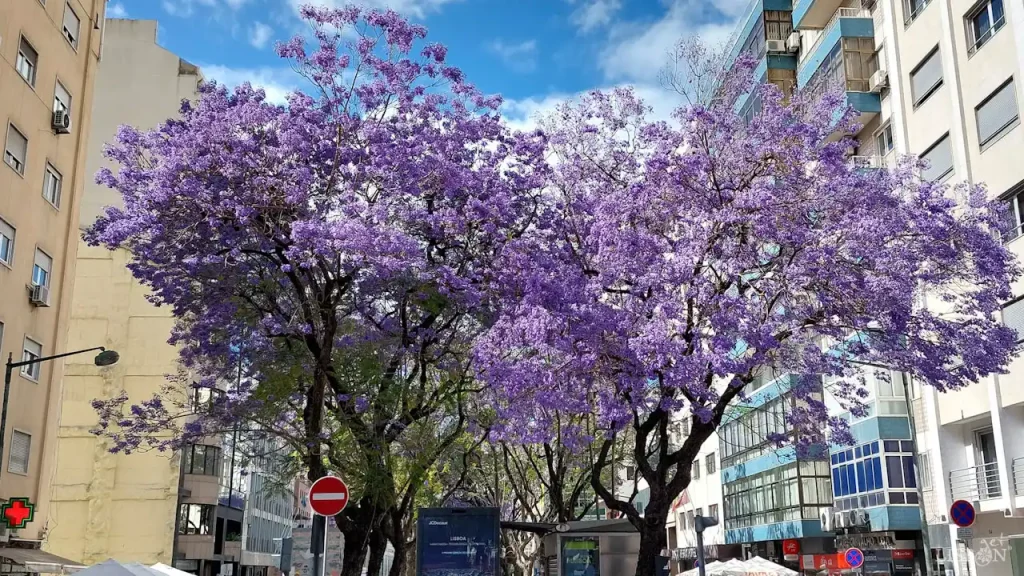
Jardim dos Jacarandás and Passeio dos Jacarandás
These two pleasant green spaces, located among residential buildings in the Parque das Nações – the Expo ’98 site themed “The Oceans: A Heritage for the Future” – celebrate the 500th anniversary of the Portuguese Discoveries.
As a result of explorations across the world, new plant species were brought to Portugal. Jacarandas were among them, and this is arguably the most fitting place to honour them through toponymy.
The garden invites us to pause on its courting/conversational benches, as well as to discover an art installation from 1998, entitled Caminho, by the artist Carsten Höller. The promenade is lined with dozens of jacaranda trees, creating a pleasant atmosphere, especially during their blooming season.

| Never miss another article | Subscribe here |
Botanical Garden of Ajuda
Finally, we suggest a visit to the Botanical Garden of Ajuda, not only because it is an extraordinary place with ever-changing scenery throughout the year, but also because the first jacaranda trees in Lisbon were planted here and, as we have mentioned, they are curiously the last to bloom in the city.
This was the first botanical garden in Portugal, founded in 1768 and designed by the Italian botanist Domingos Vandelli, intended as a collection and study ground for plants from around the world.
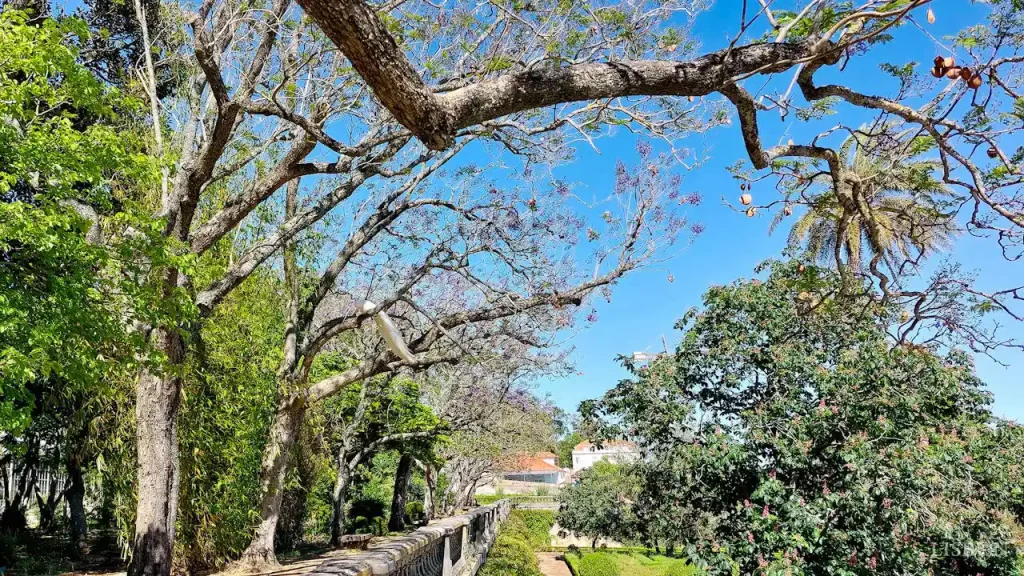
Many other places such as: Av. do Restelo, Av. das Descobertas, Av. da Torre de Belém, Av. 24 de Julho, Av. D. Carlos, Largo do Rato, Eduardo VII Park, Campo Pequeno, and Alameda dos Oceanos are also wonderful locations to appreciate the bloom of the jacarandas.
Beautiful jacarandas can also be found in the historic cemetery of Prazeres. When in bloom, guided tours in Portuguese are organised by Lisbon City Council’s cemetery division – not to be missed.
Set out on your own discovery!
Poetry is often the way we express what touches us deeply. Eugénio de Andrade, one of Portugal’s most beloved poets, dedicated this beautiful poem to the jacarandas of Lisbon.
Aos jacarandás de Lisboa de Eugénio de Andrade
São eles que anunciam o verão.
Não sei doutra glória, doutro
paraíso: à sua entrada os jacarandás
estão em flor, um de cada lado.
E um sorriso, tranquila morada,
à minha espera.
O espaço a toda a roda
multiplica os seus espelhos, abre
varandas para o mar.
É como nos sonhos mais pueris:
posso voar quase rente
às nuvens altas – irmão dos pássaros –,
perder-me no ar.
in Os Sulcos da Sede
It is worth mentioning that during flowering, the trees release a sticky substance that settles on pavements and parked cars, and the crushed flowers can emit a somewhat unpleasant smell, which may be a nuisance to passers-by. Even so, we believe that the charm of the spectacle offered by the jacarandas of Lisbon and the affection shown by locals for this species far outweigh these minor inconveniences.
May they bloom year after year, colouring the city’s atmosphere and celebrating its beauty!
The project getLISBON has been very rewarding and we want to continue revealing the singularities of fascinating Lisbon.
Help us keep this project alive!
By using these links to make your reservations you’ll be supporting us. With no extra costs!
• Looking for a different experience? We can create a customised itinerary based on your interests. Contact us!
• Or if you prefer tours and other activities in various destinations, take a look at GetYourGuide.
• Save time and money with a flexible Lisbon Card!




